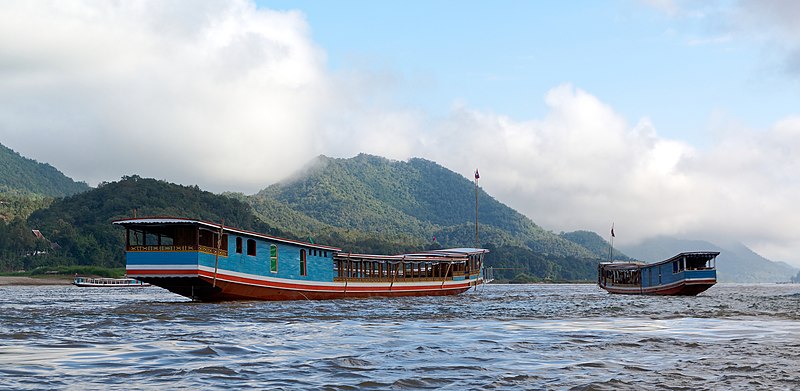 By MIRIAM ACZEL
By MIRIAM ACZEL
The Mekong River, one of the longest river systems in Asia—and twelfth longest in the world–flows through six countries: Cambodia, Laos, Myanmar, Thailand, Vietnam, and China. The Mekong Basin is particularly rich in biodiversity, and provides both crucial habitat for plant and animal species as well as a key source of livelihood for the millions of farmers, fishermen and others dependent on the river’s resources.
Growing Demand for Energy
However, in recent years, energy demands have risen, particularly in developing countries such as Laos and Cambodia, leading to increased investment in dams and power plants on the Mekong to generate hydroelectric power. For example, Laos has invested extensively in hydroelectric generation in the Mekong River Basin, with plans to double current domestic hydroelectric energy production by 2020. Although hydropower is viewed as a renewable energy source and a cleaner, more environmentally-benign alternative to polluting fossil fuels, the implementation of dams to generate hydropower is not without environmental impacts. In particular, the extensive Mekong River basin supports millions of people through movement of water, fish and aquatic life, and sediments downstream—and restricting the downstream flow of these resources could have severe environmental and livelihood consequences.
Potential Environmental Impacts of Mekong Basin Development
According to the Economist, in 2014, the lower-Mekong basin countries, Cambodia, Laos, Thailand, Vietnam, and Myanmar, accounted for over 15% of global rice production. Moreover, the Mekong region serves as a critical habitat for thousands of plant and animal species. Importantly, a 2017 report by the Mekong River Commission found that hydroelectric projects in the basin led to a reduction of rice production; fish populations; downstream soil fertility; and were also predicted to “reduce food security and potentially increase poverty levels.”
Large-scale hydro projects have also displaced local communities and threatened the river basin’s delicate ecosystem. Despite widespread protests, construction of new dams has continued, particularly in Thailand and Laos.
The People’s Stories Project
In 2014, indigenous communities living within the Mekong Basin, in partnership with researchers and the Japan-based advocacy group Mekong Watch, began recording their oral legends and stories related to nature and natural resources. Mekong Watch is dedicated to promoting sustainable development in the river basin, and established the ‘People’s Stories Project’ in order to raise environmental awareness of risks to Mekong development. Mekong Watch explain that these narratives “have played an important role in protecting nature by avoiding the over-exploitation of natural resources.”
Because the livelihoods of millions of people are inherently tied to and dependent on the natural resources of rivers and forests, many indigenous legends and tales that are based around nature have been passed down from one generation to the next.
The People’s Story Project, according to Mekong Watch, has three main objectives:
(1) To record legends, old tales, folklore and narratives and access the local knowledge and experience over natural resource use found therein;
(2) To develop an environmental education tool kit, which makes practical use of people’s stories to bring about better governance of local resources, and;
(3) To convey knowledge of local natural resource use and the richness of the world described in the stories to researchers, students, people involved in development, younger generations and citizens in general, providing a new point of view for observing natural resource management in the Mekong Region.
Importance of Nature-Centered Legends
Since 2014, the Project has collected over 100 stories in Laos, Cambodia, and Thailand, recording and transcribing them into national languages of the three countries as well as in English. Mekong Watch also published the stories in both digital and printed formats and utilized the narratives in environmental workshops conducted in local communities. For example, a tale from southern Laos describes the legend of the endangered Irrawaddy dolphin species and the ‘Sida’ bird, in order to shed light on how a dam project is impacting migration patterns within Mekong River fisheries.
In Bunong in northeastern Cambodia, the legend of the elephantdescribes how villagers who had poisoned a river in order to kill and eat its fish stocks were punished by the gods and were transformed into elephants. The story continues that the elephants were initially comfortable living among the human villagers, but after many generations of exploiting the river’s fish stocks by poisoning the river, they forgot their human origins and went to live in the forest.
The Role of Legends as Cultural Heritage
For the communities living in the Mekong region and threatened by impacts of energy generation and development, the preservation of these stories and indigenous cultural heritage is both an important step in resisting developments that could displace thousands of people, and forms a crucial part of preserving a community’s identity, and how that relates to the natural environment. Sharing, recording, and preserving these stories and traditions passed down from generation to generation in Mekong Basin communities is important for preservation of indigenous communities’ oral histories, their cultural heritage and customs, and traditional knowledge about plant and animal species, and the wider natural environment. In addition, preserving, translating, and publishing these folktales and narratives has an important role as a potential tool for community engagement, empowerment, and mobilization—particularly when these communities and their livelihoods are at risk from large-scale resource exploitation.
Therefore, as rapidly developing countries such as those in the Mekong-basin including Cambodia, Laos, and Thailand struggle to meet rising energy needs while minimizing environmental damage, preservation of nature-based folktales and legends is a crucial tool to both raise environmental awareness and preserve the valuable local identities of communities most at risk.
Miriam Aczel is a President’s Scholar PhD Candidate at Imperial College London’s Centre for Environmental Policy. Her research focus is on international energy science and policy, with a focus on mitigation of environmental and health impacts of shale gas. She is also co-founder and co-director of the Amir D. Aczel Foundation for Research and Education in Science and Mathematics, a nonprofit working in Cambodia.
Miriam is Director of Communications and blog editor for Leaders in Energy.



Leave a Reply